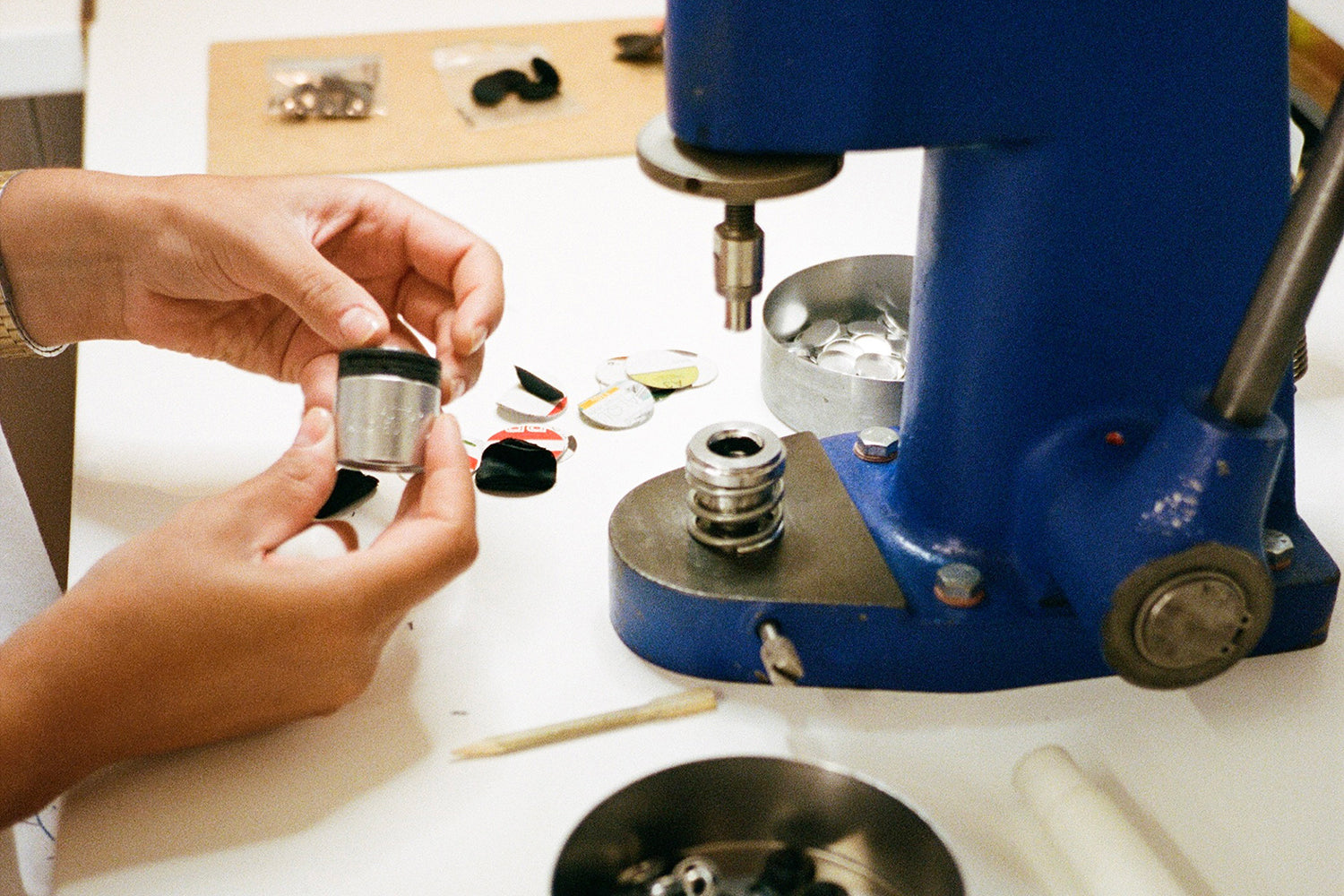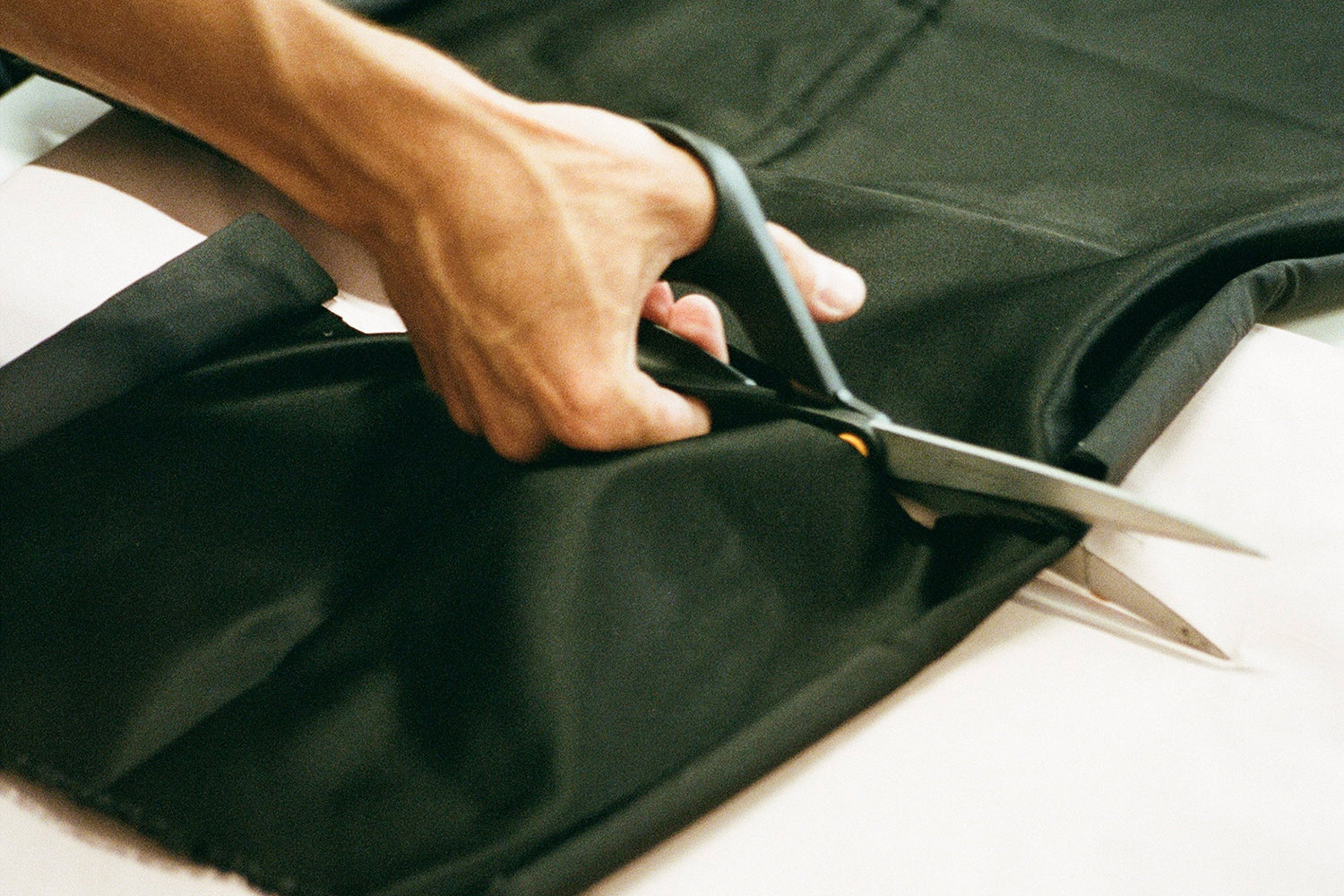
Everything you need to know about 'Upcycling'
In our eco-responsible approach, one of our commitments is the use of overcycled or upcycled materials . Different from recycling and often misunderstood, discover the main principles of upcycling.
What is upcycling?
Over-cycling in French, or upcycling in English, is a technique which consists of transforming already existing materials or products. Applied to textiles, upcycling gives new life to existing clothing or existing materials, normally intended to be thrown away, damaged, or fallen into disuse.
The origin of the word 'upcycling'
The term 'upcycling' appeared in the 90s, with the German engineer Reiner Pilz, thus naming the need to recycle waste. Upcycling is rapidly developing as one of the fundamental principles of the circular economy, through design and then towards responsible fashion. The term 'upcycling' became more popular in 2002 with the publication of the book ' Cradle to Cradle ' by Michael Braungart and William McDonough.
Upcycling of materials: leftover stocks
Upcycling dormant stocks of already existing fabrics involves manufacturing from rolls of fabric otherwise destined to be thrown away.
It is this type of upcycling which is part of our commitments at Facettes Studio: we buy rolls of fabric from major French and Italian luxury houses via the supplier Nona Source , which belongs to the LVMH group.
There are other suppliers of fabric dormant stocks, which have developed in recent years, but Nona Source has real advantages such as a certain traceability of fabrics. We have complete information on the composition of each fabric, as well as the country of origin of the material's weaving. This is already very good for upcycling, as some suppliers do not have this information at all.
On the other hand, we do not necessarily have information on the country of origin of the raw material, nor on any fabric labels, but Nona Source is working on developing this information.
Upcycling existing clothing: deconstruction
Deconstructing existing products or clothing to make new ones is another type of upcycling.
We can deconstruct an old-fashioned garment to alter its cut and bring it up to date, or completely change its nature and divert it from its original use.
Products upcycled via this process very often constitute unique pieces, or small series in which no two products are identical.
This deconstruction work is very labor-intensive and quickly adds costs. This process is almost more of a craft.
The advantages of upcycling
Unlike the recycling of raw materials, upcycling does not require a heavy industrial process.
With upcycling, we avoid the polluting production of new materials. The very principle of producing new materials, even eco-responsible ones, is polluting. By transforming what already exists, we avoid an entire industrial process of transforming fiber into fabric.
The limits of upcycling
Upcycling existing clothing, however, presents several limits: creative complexity, an obstacle to profitability or risks of greenwashing.
Upcycling represents creative complexity
Recycling textile waste from already finished products represents a different and time-consuming creative process. Instead of starting from the creative idea towards execution, an upcycled collection starts from the available materials towards the construction of the collection. The upcycling approach is limiting in its possibilities due to the limited quantity of leftover stocks, but also represents a creative challenge which can also push towards more creativity.
Upcycling can represent a brake on profitability
Due to its time-consuming nature as well as the limited quantity of each deadstock fabric, upcycling represents a brake on the profitability of a brand, in particular because a volume problem quickly arises. With limited production and identical fixed costs, a brand's business model is challenged.
Upcycling: a noble approach that can hide greenwashing
It is undeniable that upcycling represents a real solution to making fashion more circular. However, upcycling must not become a marketing argument to sell more or to improve the image of a brand with questionable practices. It is not uncommon for fast fashion brands to launch an upcycling capsule representing a tiny part of their offer but allocating a large part of their marketing budget to it.
Upcycling existing materials or existing clothing is a step towards more responsible manufacturing, but it is also necessary to pay attention to the country of manufacture as well as the production conditions. Upcycling yes, but not if production takes place on the other side of the world or in inhumane conditions.
Finally, the material itself is important, even if it is upcycled: polyester, even upcycled, will continue to release microplastics into the environment with each wash as well as after its lifespan.
At Facettes Studio, we have banned synthetic materials and only use upcycled natural and artificial materials, in order to avoid microplastic pollution. Our workshops are located in Paris in order to protect local know-how, guarantee non-carbon energy, as well as ethical production.


































































































